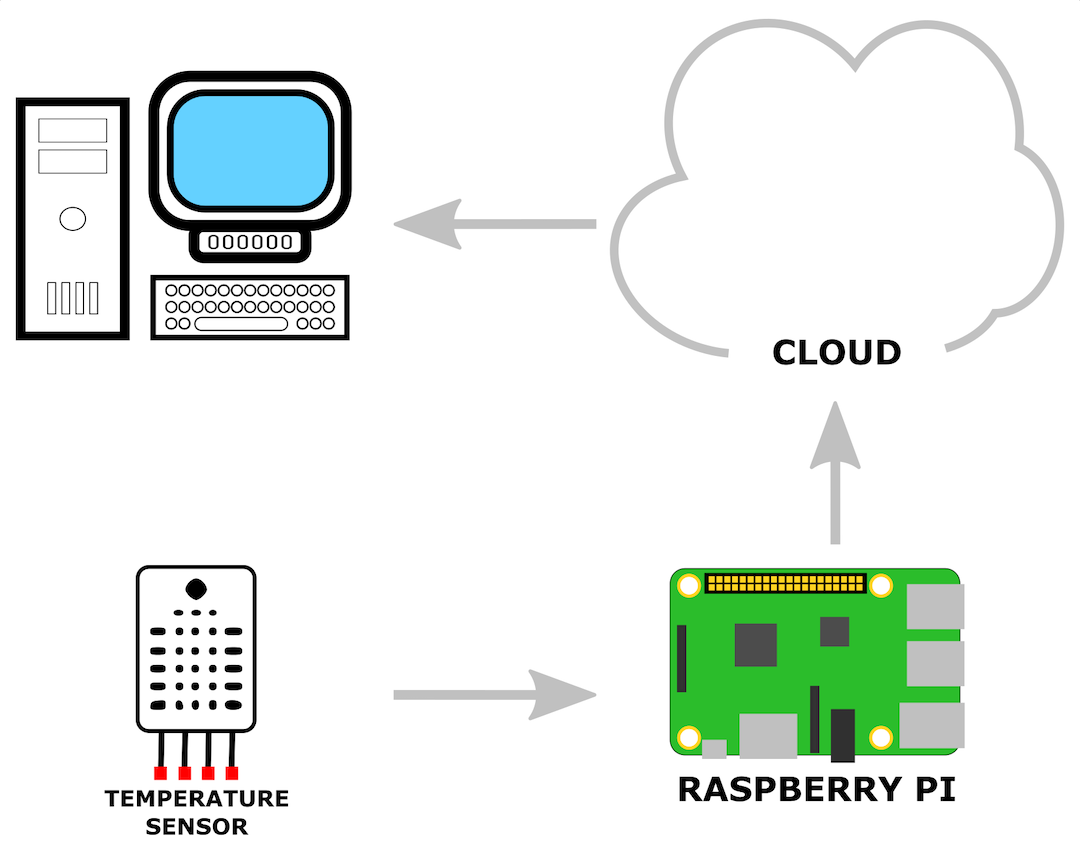Edge analytics removes some of the processing burden from the internet-connected computer. Instead of just sending sensory information, as is the case in the early IoT solutions, an edge analytics architecture processes the data at the source (the edge), thereby limiting the amount of data sent back. Edge analytics takes its name from edge computing. An edge analytics application benefits from resources close to where they are needed, just as other edge computing applications do. The following diagram shows a basic edge analytics application:

As you can see in the diagram, a Raspberry Pi is used in place of a microcontroller to communicate with the temperature sensor. Being a single-board computer, the Raspberry Pi is far more powerful than a microcontroller such as the ESP8266. Although the preceding diagram only shows one sensor connected to the Raspberry Pi, it could show many more. The Raspberry Pi contains an entire operating system and built-in programming environments that make it relatively easy to access sensory information and process it.
While our analogy of edge analytics being similar to the personal computer revolution may not be perfect, it is possible to see the correlation between the two concepts. The history of computing seems to always go back and forth between central processing control and distributed processing or edge processing. Edge analytics for IoT falls into the latter category.